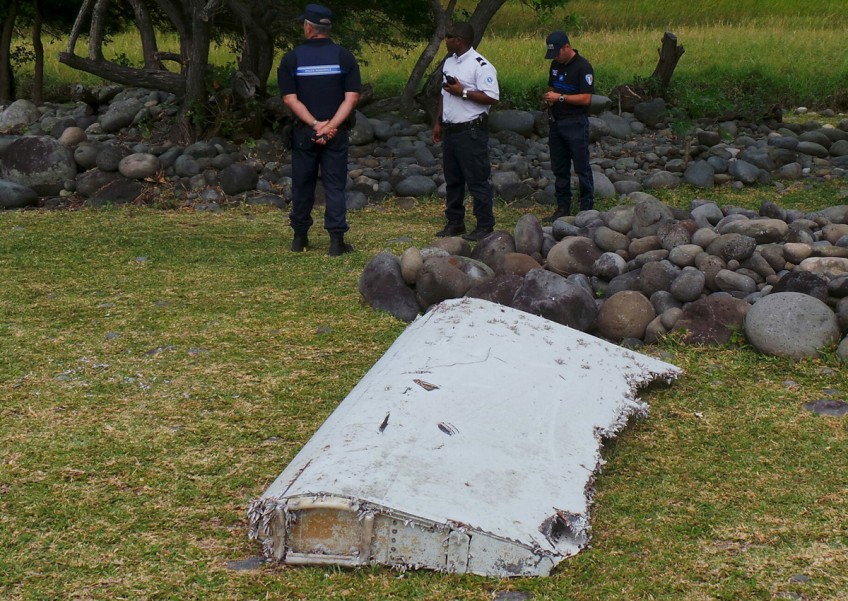What's next in probe of wing part

The discovery of plane debris washed up on the Indian Ocean island of Reunion, if confirmed to belong to missing Flight MH370, could finally resolve the mystery of what happened to the Boeing 777. Investigators are examining the debris, a wing part called a flaperon.
Here's what could happen next:
Investigators will examine a number stamped on the flaperon to link it to the missing plane. The number was not a serial number but could have been some sort of maintenance number that would help with identifying it, Australian Deputy Prime Minister Warren Truss told reporters yesterday.
Planes are stamped with multiple identifying numbers to aid investigators after a crash.
Even without the part number, investigators should still be able to trace the origin by looking at distinctive features such as rivet patterns.
Examining the metal alloy used could also help identify it, Bloomberg quoted Professor Geoffrey Dell, a don specialising in accident investigation at Australia's Central Queensland University, as saying.
Investigators will also examine the flaperon closely to glean any information, such as charring, dents or scratches, to indicate the violence of a crash.
Experts say the debris discovery is unlikely to lead to the main search area off Western Australia moving to a new location.
Oceanographers say it is entirely consistent with currents in the Indian Ocean for debris to wash up more than 3,000km from the search zone.
A huge, counter-clockwise current, called a gyre, covers much of the southern part of the 70.5 million sq km Indian Ocean, running east along the Southern Ocean near Antarctica, up the west Australian coast and westward below the Equator towards Reunion and Madagascar, before turning south.
"Our model results that we did last year predicted that within 18 to 24 months after the crash, it was a possibility that it would have ended up within that region," Reuters quoted professor of coastal oceanography Charitha Pattiaratchi, of the University of Western Australia, as saying.
But the discovery of debris is likely to lead to the search area widening in the hope of finding more plane fragments or other debris, such as suitcases.
Another helpful clue: barnacles. The flaperon was covered in them and experts can age barnacles that attach themselves to flotsam, which would give an idea of how long the flaperon had been in the water. They may even be able to tell which part of the ocean it has come from by the species of barnacles attached, Reuters reported.

This article was first published on July 31, 2015.
Get a copy of The Straits Times or go to straitstimes.com for more stories.